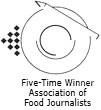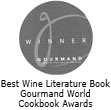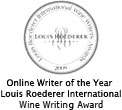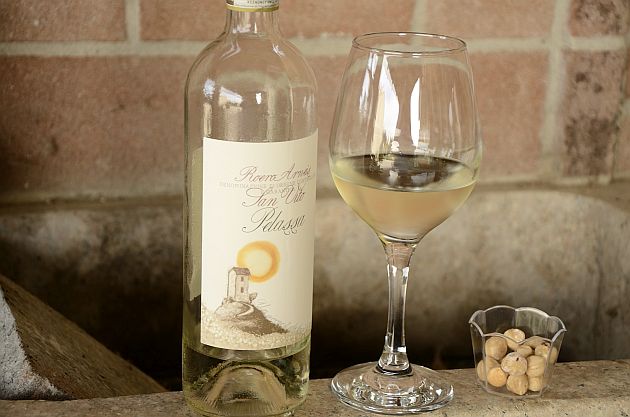
By Carolyn Hetke
The first time I tasted Arneis wine was at a trade tasting in Toronto. It made an immediate impression and I enthusiastically took note of the varietal. So I was delighted when I had the opportunity to visit the Roero wine region in Piedmont, Italy. Roero is the only region that produces Arneis and is also home to its own unique expression of Nebbiolo wines.
Roero wine region, situated in Italy’s north-west Piedmont region, is burgeoning with pride, passion and ambition following its promotion to DOCG status and recognition of its 134 menzioni geografiche aggiuntive (MGAs) in 2004.
Arneis and Nebbiolo, from these parcels, or crus, are the only two grapes given DOCG status. Roero is unusual in that it is one of only a few DOCGs in Italy that permit the production of not only red and white wines, but of sparkling as well.
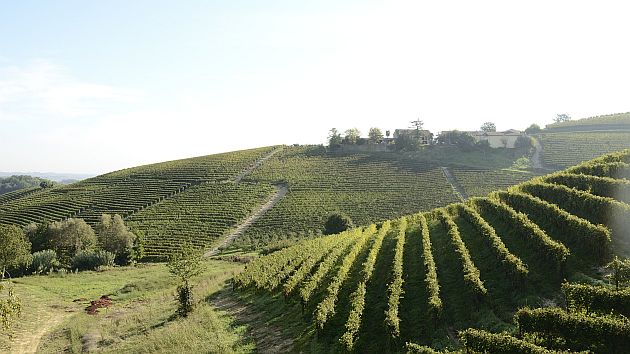
Arneis
Since Italy is one of the most diverse wine-producing countries, with more than 1,300 grape varieties in production, you’re not be alone if you aren’t familiar with Arneis.
Although it dates back to the 1400s, Arneis has come back from the brink of extinction in the 1970s and is riding the wave of increased interest and popularity that white wine is currently enjoying. As it gains popularity, small plantings are starting to appear outside of Italy, but none rival the status of Roero Arneis.
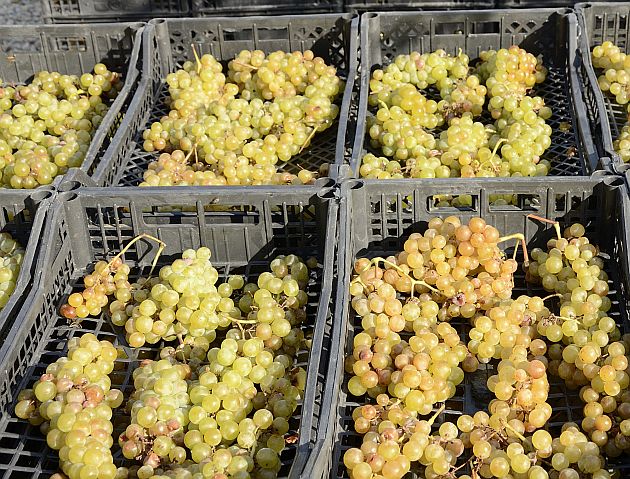
Arneis has light floral aromas, but the pronounced spice and salinity make it anything but shy and retiring. If there were a dating app for grapes, you might see:
“Like a refreshing breeze on a warm day, I’m a versatile white grape varietal that pairs well with almost anything, whether it’s a casual picnic or a fine dinner. Easy-drinking, clever and a little bit naughty, I bring a bright, crisp – even sparkling vibe to the table.” Arneis
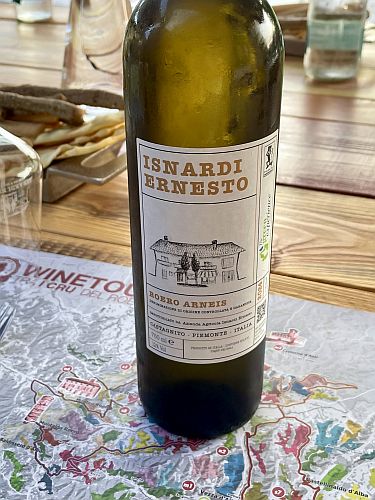
Indeed, Arneis is versatile, with a Charmat method Reoro Arneis Spumante; a still Classico that is ready to release after 4 months aging, and a Riserva that can be released after 16 months aging. They must all be a minimum of 95% Arneis, but in practice, winemakers are using 100% Arneis.
They are all medium-weight, medium acidity and dry, typically with 2-3 grams of residual sugar per litre. An outstanding characteristic of Roero Arneis is the underlying minerality and salinity that comes from the famous mineral-rich sandy marl soil.
Having said that, each type has its own distinct personality. The sparklings are usually Charmat method, dry, clean and crisp with a lively, medium-sized perlage (bubbles). They are medium-bodied and vibrant, displaying floral and fruity characteristics over the hallmark mineral tones.
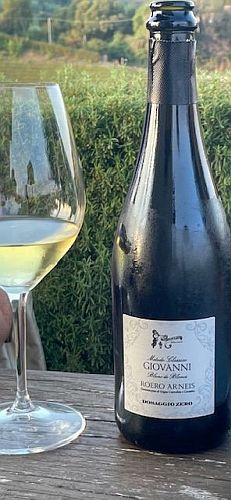
Arneis Classico is distinctive in that it is dry but displays the intense fruit and aromatics that are often associated with more off-dry Rieslings or Gewürztraminers. In comparison to other dry, aromatic white wines, Arneis’ spice and aromatics are far more pronounced than, say, a Grüner Veltliner or Chenin Blanc.
Great care is taken to preserve the grape’s characteristics, with fermentation taking place in steel tanks and winemakers typically eschewing any malolactic fermentation or oak treatment.
Aging normally takes place in steel tanks and the bottle. Aromatics tend toward jasmine-like white florals, clove and cinnamon spice, dried flowers and herbs, peach and apricot fruit, and pronounced minerality.
The palate is remarkably fresh and silky, with the peach and pear fruitiness offset by a seam of mineral salinity that lends gravitas to the body. Such pronounced aromas and flavours lend themselves easily to a long, pleasant finish.
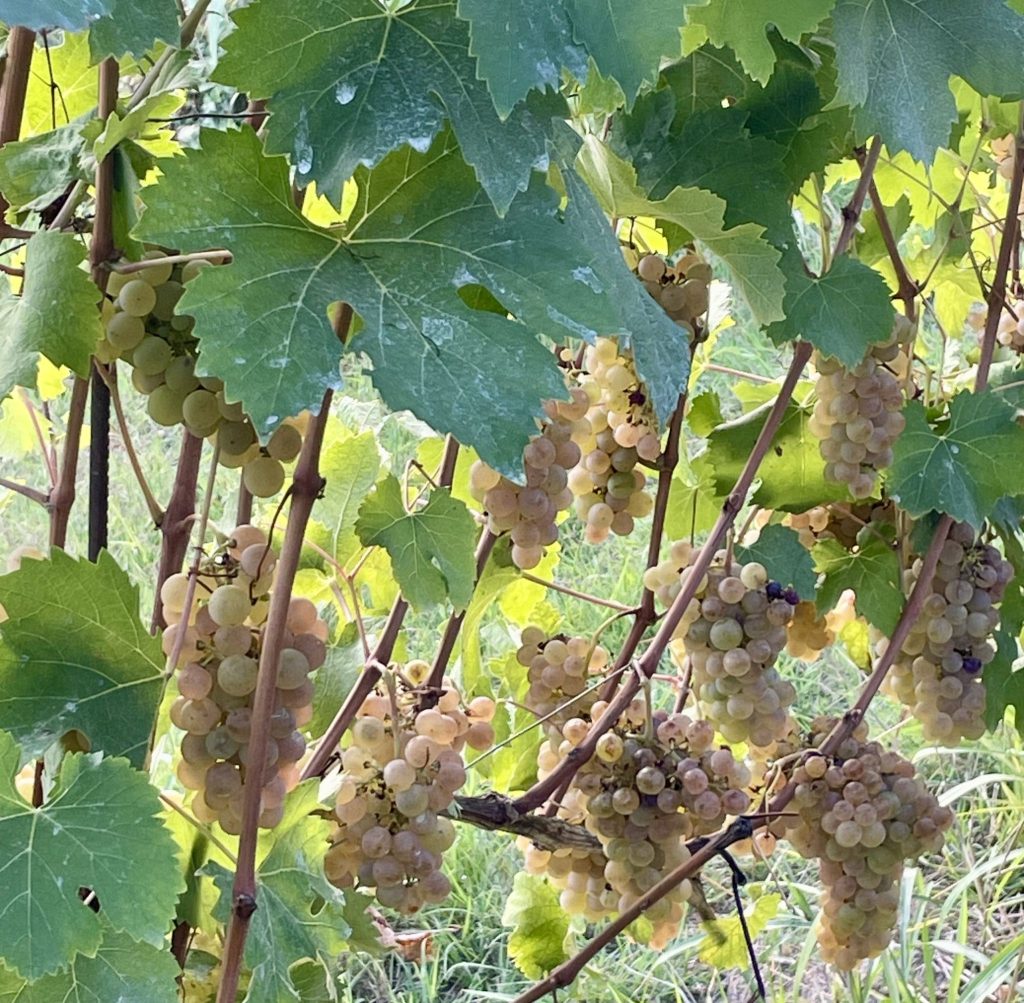
The Riserva requires a minimum of 16 months aging, with aging in wood an option. The result is a clean, nicely weighted and textured palate, slightly savoury from the mineral notes.
The fruity traits of the Classico are somewhat muted, but the palate is still fresh and often displays more complex characteristics, such as sweet talc, more pronounced dried flowers and savoury herbs; as well as light, sweet hay or nutty notes.
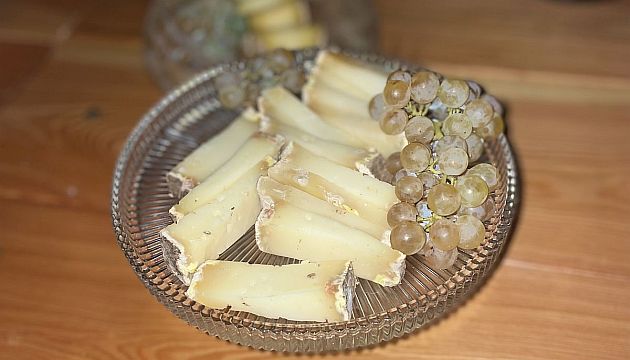
When you first find Reoro Arneis on North American shelves, you may think there is ‘a new girl in town’, but Arneis has a long history in the Piedmont region. The earliest references date back to the 1400s, and it is believed the name evolved from the Medieval family name Renesio.
Today, the name is linked more closely with the local Piedmontese dialect word for ‘Little Rascal’. Tradition says it earned the nickname because it is finicky to grow. When asked, though, current producers didn’t highlight any specific issues and actually pointed out that because Arneis ripens so easily and early, it avoids possible damage from late-season rain or storms.
Market records show significant volumes of Arneis being sold centuries ago. It was traditionally made in a sweet style, similar to Moscato. Over time, production faltered so much that at one time in recent history, Arneis was nearly extinct and was planted interspersed with the Nebbiolo vines to attract birds and spare the nearby Nebbioli.
Arneis now dominates production volumes in Roero, currently at about 7,000,000 bottles annually vs 800,000 of Nebbiolo.
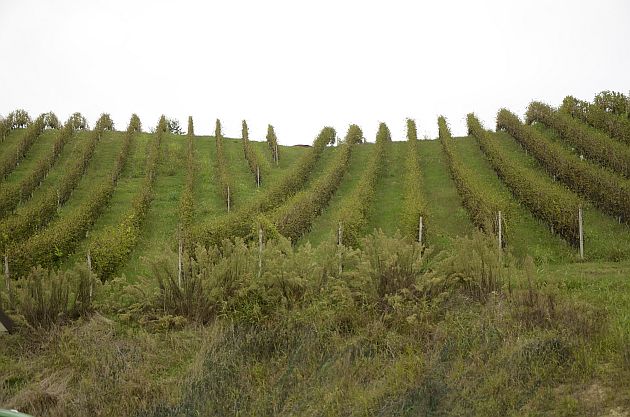
Nebbiolo
The lesser volume of Nebbiolo production in Roero is not a reflection of quality. The first recorded references to Nebbiolo date back to the 1300s in the region, and it was noted that naming the specific grape was a sign of distinction because records at that time often only referred to wine by its colour.
Put into context with neighbouring Nebbiolo-producing regions like Barolo or Barbaresco, Roero Nebbiolo is a softer, more elegant expression of the grape, like the buff movie star at the celebrity gym vs Rocky Balboa in the meat locker. So its dating profile might read:
“With a medium body and a delightful complexity, I am both approachable and intriguing, without overwhelming the senses. Ready to share my depth and nuance just two years after harvest – I’m the perfect companion for someone who appreciates charcuterie, pasta, beef or game.” Nebbiolo
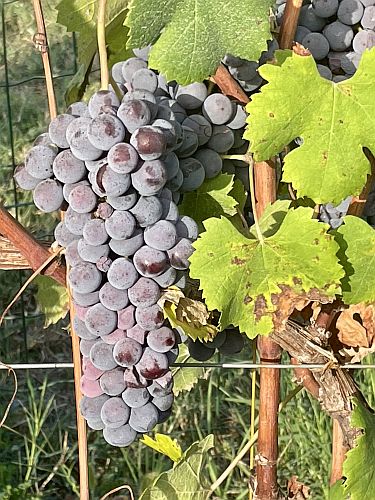
Simply labelled as Roero (Roero Rosso is permitted but is less common) or Riserva, producers are aspiring to the same level of DOCG name recognition as Burgundy or Barolo, where the contents are immediately understood.
Many Roero producers insist that they are not in competition with Barolo. Luca Faccenda of Valfaccenda sums up Roero, saying he believes that consumers will come to appreciate Roero for its freshness, elegance, softer, sweeter tannins and its approachability after 2 years in its own right.
It is worth noting that this is all accomplished without sacrificing complexity or ageability. Consumers will also appreciate that this unique expression of Nebbiolo comes with a price tag that is a fraction of the neighboring Barolos.
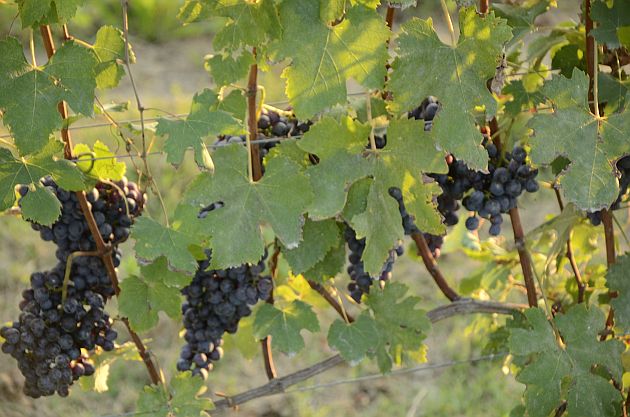
According to DOCG regulations, Roero must be a minimum of 95% Nebbiolo, but 100% Nebbiolo is the norm in practice. Roero can be released for consumption on July 1 of the second year after harvest, with a minimum of 6 months of wood aging.
In practical terms, this means the wine is ready for consumption 20 months after harvest. Riserva requires an additional year of aging, but the wood aging minimum remains at six months.
Common aromatics in Roero include spicy clove and cinnamon, dried flowers and herbs, roses, cherries, strawberries, and sometimes light petrol or barnyard tones. The palate is fresh and silky at the onset and often reflects dried cherry, strawberry, spice, and savoury dried herbs.
There are often mineral or saline tones as well. Then you reach the hallmark underlying ‘light’ tannic structure. I say ‘light’ in air quotes because it is all relative. Regional producers pride themselves on the light tannic structure of their Roero but the ‘light’ reference, I believe, is relative to the neighbouring Barolo’s infamous tannins!
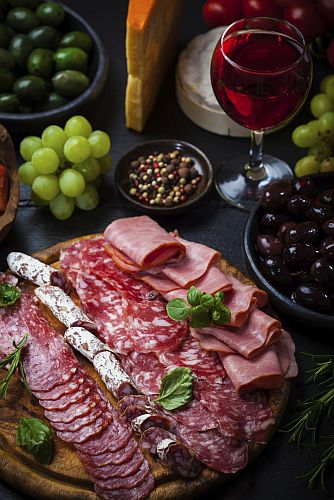
With the Riservas, the aromatics become more pronounced and expand to include licorice, leather and sometimes some meaty elements. The tannins are a bit finer but still provide a sturdy framework for the wine. Approachability is not a tradeoff for ageability here in the least.
Roero is designed to go with food – from hearty meat and cheese charcuterie platters to nutty pastas, beef and game. I can attest to how well the Malvira Roero Trinita went with venison!
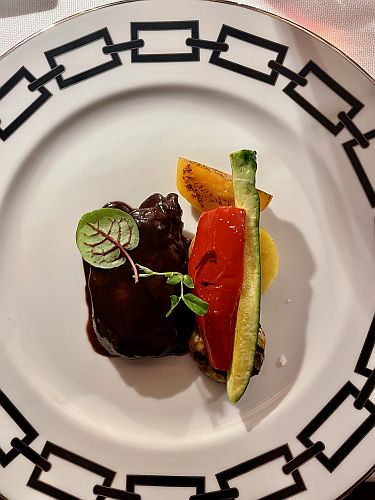
The Soil
As is often the case, a lot of the credit for the Roero Arneis and Nebbiolo characteristics goes to the soil. About 25 million years ago, the Piedmont region was a large sea. That fact may seem remote at first, but it is brought home by the vessels on display in many wineries filled with sand, shells and marine fossils that were found in the vineyards.
About six million years ago, the Strait of Gibraltar closed and the evaporation process started. Two to three million years ago, the hills of Roero emerged, a combination of sandy gravel, sandy-marine sediments and clay-marine sediments, all laden with mineral salts and shells.
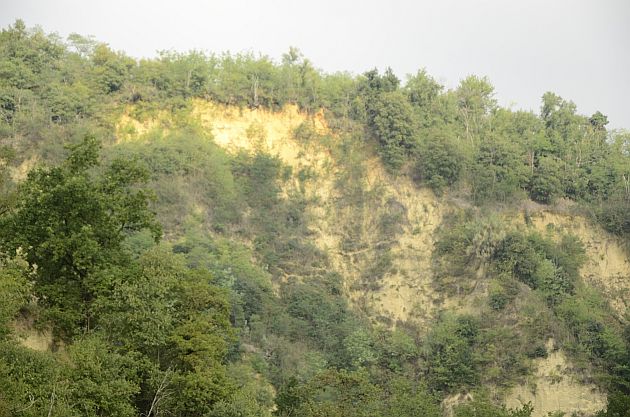
The Tanaro River originally flowed north, but when it hit the soft, sandy soils of the Roero region, it diverted east and cut a swath, severing the Roero region from the Alba region, where the soil is more compact and has more clay content. The river’s diversion created 300-metre-deep sandstone canyons and spires known as The Rocche.
It is this soft, arid, mineral-laden soil that imparts the mineral and saline characteristics to the wine. It is also responsible for making the tannins softer and sweeter in Roero Nebbiolo, setting it apart from its counterparts and making it more approachable early on.
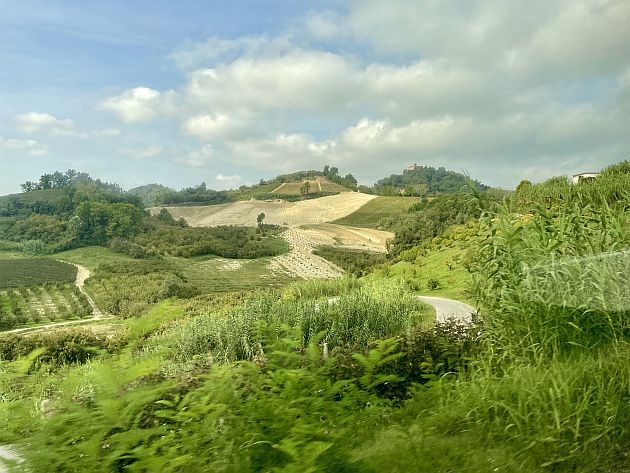
There are a number of different soil types in the region. In the north-west of Roero, along the Rocche, the soil may contain up to 80% sand. As you move east, the limestone component increases gradually and can represent 50% of the soil composition. By the time you reach the banks of the Tanaro River, you will find some clay deposits in the chalky soil.
Climate
Roero receives the least amount of rainfall of anywhere in the Piedmont region at 746 mm per year on average, compared to Barolo’s 813 mm. The average temperature is 18.05 degrees Celsius, just slightly higher than the surrounding regions.
With optimal conditions, this can concentrate flavour in the grapes and help ensure trouble-free ripening, which is particularly important for the late ripening Nebbiolo grapes. In less-than-optimal conditions, exacerbated by the soil’s inability to retain water, it can result in stressed vines and a significant reduction in volume.
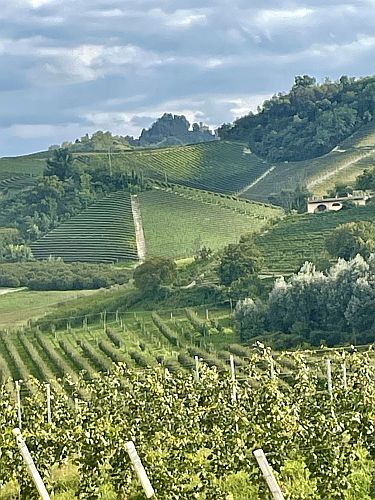
Roero is proud of its biodiversity and sustainability. In 2014, the wine-producing landscapes of Roero, along with those of Langhe and Monferrato, were declared a UNESCO World Heritage site.
The region was once a very important producer of fruits and vegetables for the surrounding regions. While there are still peach, pear, and apple orchards in commercial production, many orchards and vegetable plots have been given over to vineyards.
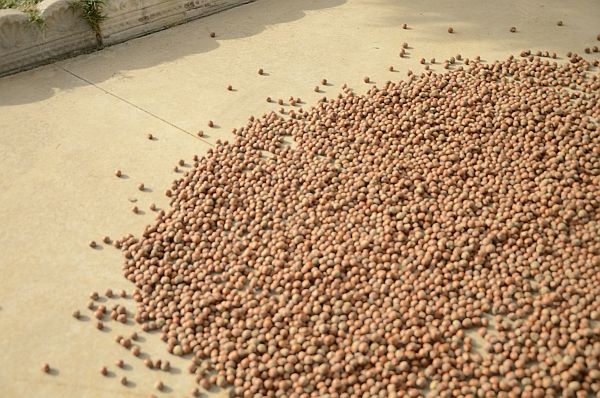
Hazelnuts are a significant crop in the Roero. The home of Ferrero Rocher is only a couple of miles away in Alba. Hazelnuts also figure prominently in local cuisine, as do truffles.
There are as many as six types of truffles commercially available from the Piedmont area, hunted by specially trained dogs in forests of oak, hazelnut and chestnut trees. Pigs can’t be used in truffle hunting in Italy because they tend to eat the profits, but more importantly, they threaten future truffle growth because they destroy the spores in the tree root system.
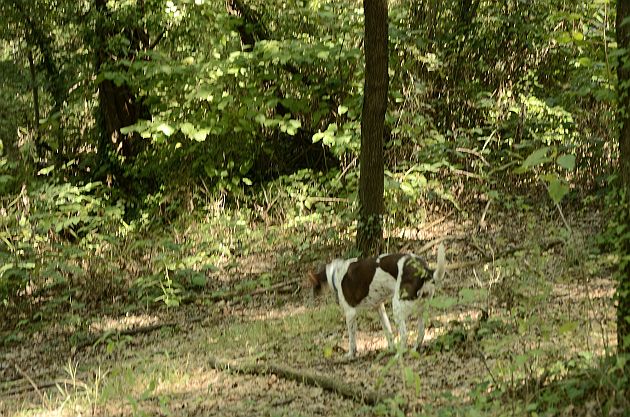
Food Pairings
Any version of the Arneis Sparkling, Classico or Riserva would be a welcome choice on its own, but they all pair beautifully with many dishes.
The Sparkling or ‘Spumante’ is clean and lively and pairs well with a charcuterie board of deli meats such as Mortadella, Prosciutto Cotta or Vitello Tonnata.
It is often accompanied by light or medium cheeses such as Ribiola, Gorgonzola or Toma. The charcuterie platters also often include the actual Arneis grape as a table grape as well. I did mention Arneis’ versatility, didn’t I?
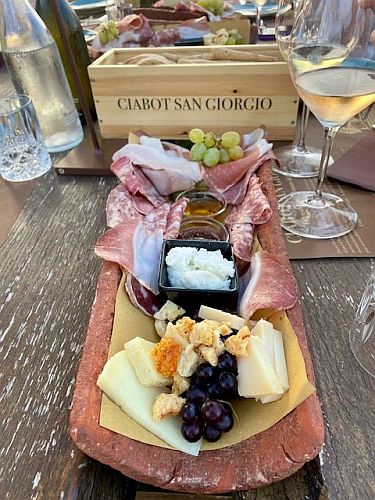
I was surprised to have the Arneis paired with beef twice, once with cured salt beef and again with beef carpaccio in the first course of a meal.
Roero producers often have full working farms, and when we visited Andrea Isnardi of Isnardi Ernesto wines, he was as proud of his Fassone cattle as he is of his wines. (Both are delicious by the way!)
The cattle are raised specifically because they are very lean and perfectly suited to the several versions of beef tartare that are typical of the region: shaved, cubed, and hand-chopped.
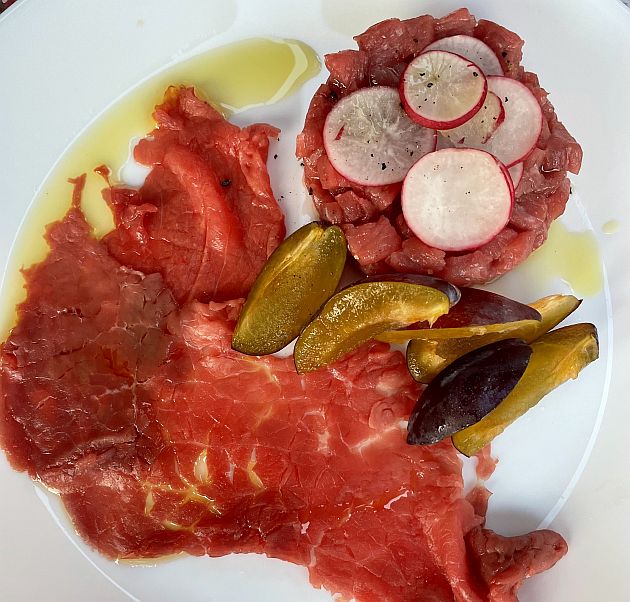
Roeiro Arneis was also served routinely with charcuterie platters of cold meats, mild or medium cheeses such as Taleggio or Bra Duro, giardiniera, beef carpaccio, honey and mostarda. It is also served regularly with the pasta course. Pasta fillings ranged from tomato/toma (like ricotta), hazelnut paste, to pork/veal combinations.
Pastas are often nestled in a rich veal broth or reduction. Typical garnishes include truffles and hazelnuts. We particularly enjoyed Carlo Costa Roero Arneis with the Tajarin and Truffle dish below.
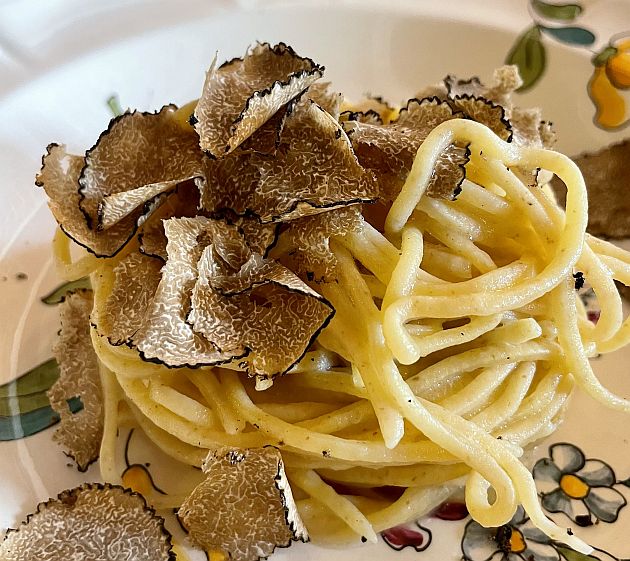
Roero Arneis Riserva is typically less floral and less fruity than the Classico, and the mineral/saline qualities may be enhanced. Since none of these features are overwhelming, the Riserva still pairs well with any of the choices you would make for the Sparkling or Classico.
But it has the gravitas to pair with chicken, pork or veal dishes. Sauces or broths that accentuate the nutty tones of the Riserva work particularly well.
Roero Rosso, because of its elegance and approachability, also pairs well with charcuterie platters. The meat may include various salamis, and cheeses may extend to include stronger versions such as Castelmagno or Braciuk.
Classic pairings include beef, venison, pasta or risotto. Duck with a cherry sauce would also work well with a Roero. The Riservas that have developed some earthy or leather notes are particularly enhanced when there is a mushroom or truffle component to the dish.
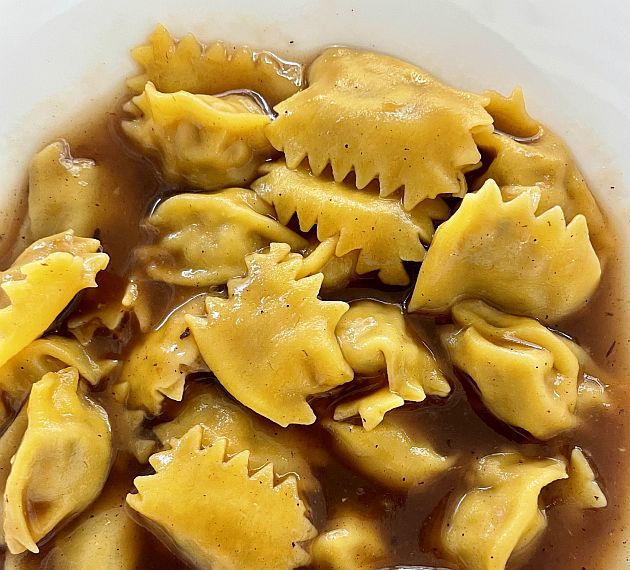
All versions of Roero’s Arneis and Nebbiolo wines are a regular feature of the ‘Merenda sinoira’, a Piedmont tradition that roughly means ‘earn your dinner’ in Piedmontese dialect.
It was historically a small feast of cold meat, cheese, bread and wine served in the vineyard to the workers, meant to replace dinner before they went home. Today, the term is used in the same way as Happy Hour or L’apéro, but the ‘merenda sinoira’ may extend well into the evening and replaces dinner.
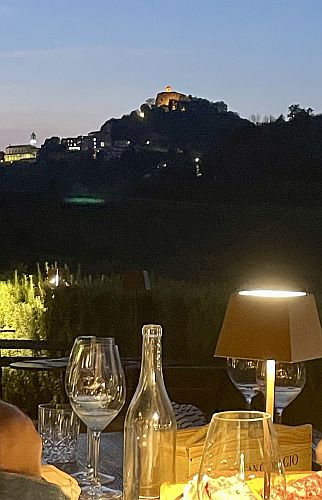
If you are a travel buff, a foodie and/or a wine lover, you need to put Roero high up on your wish list! Nothing quite matches Arneis’ unique characteristics and no one will argue with Roero’s exquisite expression of Nebbiolo, or the price.
I generously support Roero’s pride, passion and ambition; and I selfishly revel in the value Roero wine represents on its journey onward and upward!




